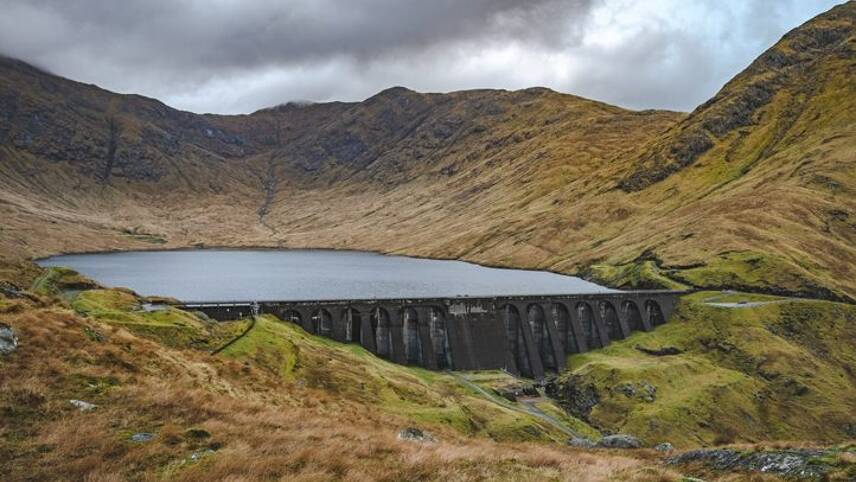Register for free and continue reading
Join our growing army of changemakers and get unlimited access to our premium content

Pictured: Cruachan dam and upper reservoir. Image: Drax
The existing 404MW underground power station at the site was opened in 1965. At the time, it was the first project of its kind in the world. There are now three more pumped hydro storage schemes in the UK – Foyers in Scotland and Ffestiniog and Dinorwig in Wales. There are also far larger schemes in China, Japan and the US.
Pumped hydro storage schemes use reversible turbines to pump water into a reservoir to store excess power when supply is greater than demand. Stored water can then be pumped in the opposite direction to generate renewable electricity when demand is higher.
Drax is planning to more than double the Cruachan facility’s capacity by 2030, should planning and delivery processes run to time, with work on-site beginning in 2024. The company’s plans involve hollowing out a cavern in Ben Cruachan, excavating around two million tonnes of rock to house the power station and related infrastructure.
According to the BBC, Drax has set aside £500m to invest in the delivery of the new power plant.
Drax is estimating that it will take around one year for the Scottish Government to decide whether to grant consent under Section 36 of the Electricity Act 1989.
In a statement, Drax said the expanded project would provide “critical stability services to the power system” as more renewable electricity generation comes online. The UK Government is planning to end unabated fossil-fuel electricity generation by 2035, with significant expansions planned for the nation’s offshore wind and nuclear capacity in particular.
Some of this electricity will doubtless be stored using battery technologies. The UK Government moved in the summer of 2020 to relax planning rules for large-scale lithium-ion battery storage units and there has been a significant uptick in applications for these projects subsequently.
But batteries do come with several drawbacks that can be overcome with alternatives such as pumped hydro. Large-scale pumped hydro projects can store energy for longer periods than batteries. They also help to avoid challenges with the responsible sourcing of materials like lithium, and typically have a longer working lifespan.
Drax has stated that it is in talks with the UK Government to urge the development of a specific framework for investment in long-duration electricity storage and flexibility technologies.
“Drax’s plan to expand Cruachan will strengthen the UK’s energy security by enabling more homegrown renewable electricity to come online to power homes and businesses across the country, helping to end our reliance on imports and cut costs,” said the firm’s Scottish assets director Ian Kinnaird. “Only by investing in long-duration storage technologies can the UK reach its full renewable potential, and we are ready to move mountains to do just that.”
The announcement comes shortly after Drax announced plans to trial additional carbon capture and storage technologies at its power station in Selby, North Yorkshire.


It would be interesting to have a comparison between water storage and battery costs
Richard Phillips
Para 3, water is not “pumped” in the opposite direction, it FLOWS in the opposite direction, through the turbines to generate the electricity.
Any news on the comparison between the costs of water storage and battery storage??
Richard Phillips
Here are rough numbers for proposed Coire Glas site.
$70/KWh storage – so comparable to latest Na-ion battery tec.
Of course this is apples v oranges because a pumped hydro can do months of storage: “inter-seasonal”. This is a very good, state-of-the-art number, better than previous schemes in U.K..
Interestingly, Coire Glas capacity is equivalent to almost 1 hour of storage for the entire U.K, slightly more than the entire pumped hydro that exists right now. Another 10 of them would be handy, especially if you find sites in the Pennines / Northern England.
Oh, that’s build cost only – not including BAU ops.